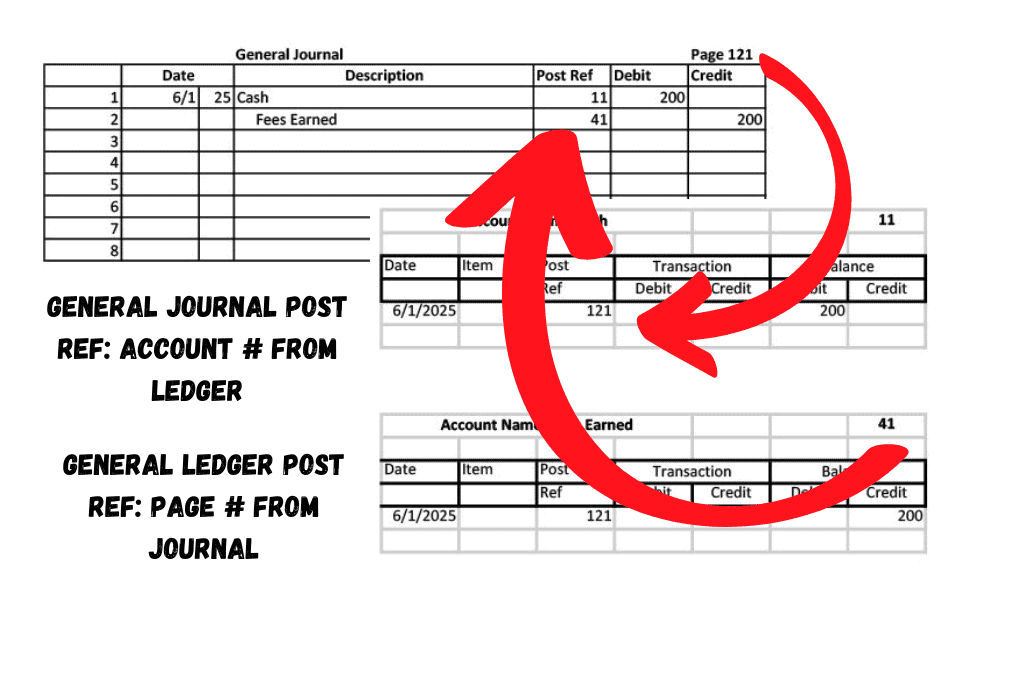Posting Reference or Post Ref is a column in an accounting General Journal and General Ledger. It serves as a check and balance to ensure each transaction has been posted to the appropriate account. It is used in the process of posting transactions from the general journal to the general ledger.
To understand the difference between a Journal and a Ledger, watch this video:
In the General Journal, when an account has been posted to an individual account, the number assigned to that account is listed in the Post Ref column to indicate that entry has been posted. In the General Ledger, for the corresponding transaction, the page number of the General Journal is entered to signify the page where the transaction can be found.

How Accounts are Numbered in Accounting
When account numbers are assigned in the Chart of Accounts, the numbers assigned are based on the account type. The assigned number becomes the first number of the account. For example, Cash, an asset, is assigned an account number beginning with the number one [100, 1000, 10100]. Accounts Payable, a liability, is assigned an account number beginning with the number two [200, 2000, 24000].
For businesses without Cost of Goods Sold or Cost of Merchandise Sold, the numbers are assigned based on this structure:
| Assets | 1 |
| Liabilities | 2 |
| Equity | 3 |
| Revenue | 4 |
| Expenses | 5 |
For businesses with Cost of Goods Sold or Cost of Merchandise Sold, the numbers are assigned based on this structure:
| Assets | 1 |
| Liabilities | 2 |
| Equity | 3 |
| Revenue | 4 |
| COGS/COMS | 5 |
| Expenses | 6 |
For step-by-step guidance on how to post journal entries to accounts, check out this article:
-
How to Know What to Debit and What to Credit in Accounting
If you’re not used to speaking the language of accounting, understanding debits and credits can seem confusing at first. In this article, we will walk through step-by-step all the building
-
How to Analyze Accounting Transactions, Part One
The first four chapters of Financial Accounting or Principles of Accounting I contain the foundation for all accounting chapters and classes to come. It’s critical for accounting students to get
-
What is an Asset?
An Asset is a resource owned by a business. A resource may be a physical item such as cash, inventory, or a vehicle. Or a resource may be an intangible
-
Difference Between Depreciation, Depletion, Amortization
In this article we break down the differences between Depreciation, Amortization, and Depletion, discuss how each one is used, and what the journal entries are to record each. The main
-
What are Closing Entries in Accounting? | Accounting Student Guide
What is a Closing Entry? A closing entry is a journal entry made at the end of an accounting period to reset the balances of temporary accounts to zero and
-
What is a Liability?
A Liability is a financial obligation by a person or business to pay for goods or services at a later date than the date of purchase. An example of a

